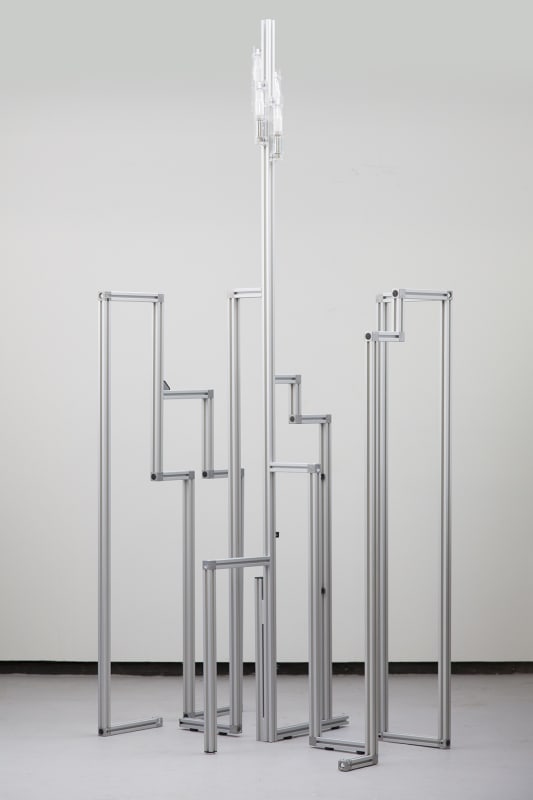Sometimes things are not as they seem, and other times things seem to be as they are not. But very often we simply do not know how things are; we just rely on our senses and our assumptions to guide us through this uncertain world. In No Not Never None, Jeremy Everett and Fabio Lattanzi Antinori investigate this disconnect between how things are and how they seem. Through a mixture of painting, sculpture, photography and installation, they reveal a world which is full of negation loops, where a thing is both not something and not nothing.
The world, for Jeremy Everett, is filled with mystery. His work explores the infinitely nuanced contours of experience, taking the way we see the world as a starting point without assuming there is one particular way of seeing and rejecting the notion that what is seen is the whole story. He is interested in the object’s relation to space and its environment, the perennial question of what lies behind what we see, and the notion of an unfinished landscape in which the perceiver furnishes the final component. Fabio Lattanzi Antinori takes this notion of the unseen to its tangible extreme by analysing the silent, and yet fully palpable, motions of financial markets. His work focuses on how the languages of corporate systems inform the way we shape our communities and the actions we take towards our survival. At the root of this is the observation that financial data, although abstract and essentially ethereal, controls our resources and ultimately binds us together. Both artists are thus concerned with the precarious balance of hidden structures, unveiling a substructure of volatility and vulnerability which is – for better or worse – the very basis of a fragile human existence.
The title of the exhibition, No Not Never None, captures the sense in which we are always caught in a state of apparent contradiction; the sense in which our lives always and forever seem to be something and nothing at the same time. The gallery becomes a site of profound uncertainty in which norms and conventions are destabilised, while also offering a penetrating insight into the fundamental forces of finance and perception that govern how we live.
Fabio Lattanzi Antinori presents a brand new sculpture which creates an immersive, multi-sensory experience exploring the financial practice of ‘front-running’ – trading on advance information provided by brokers. Whilst the work visually references the microwave towers used for the high-speed transmission of financial data, Lattanzi Antinori has collaborated with perfume designer Sergey Dziniruk to develop a range of fragrances that will be omitted by the sculpture. Lattanzi Antinori also presents ones of his interactive screenprints which, when touched by the viewer, translates financial data into song, giving musical expression to the otherwise stark and inhuman data that constitutes so-called ‘dark pools’ markets.
Jeremy Everett destabilises the architecture of the gallery with an installation of his ‘shims’: these immaculately folded white dress shirts are placed under the gallery’s central column, causing the structure to lean to one side. In this work, Everett explores associations of daily work and the precarious structures that underpin it. He also presents a series of photographs which explore the theme of decay, where a partially obscured image is achieved by burying the print in the earth for a number of days. In a further concern with process-driven work, Everett’s paintings use a fine dusting of colour in a process that uses air and pigment in the same way a photocopier uses light to reveal the canvas stretcher as the geometric content of the painting. Here he explores the notion of that which lies beneath or behind the world we previewed as the hidden structure of experience.
In both Everett and Lattanzi Antinori, there is a simmering sense of dystopia, as they uncover the chaos and peril that lies only just behind the apparent order and control of our world. But as the title No Not Never None suggests, things are not quite as they seem, since just as that negation falls into a loop, the idea of dystopia inverts itself on closer inspection. After all, the existential uncertainty bubbling under the surface of our experience is just the substructure that supports it; as such, what appears to be a fantastical dystopia might just be the true nature of the world according to these two artists.



